Godzilla: King of the Monsters (2019) - Movie Review
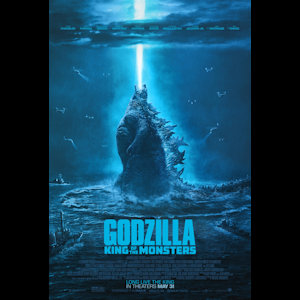 | | I hope you like blue |
Ever since 2014, the secret has been out: there are gargantuan monsters--"titans"--in this world, and they will not hesitate to lay waste to mankind. A private organization known as Monarch has been studying these creatures for decades, and the US government is now trying to take control of the program in order to prevent another disaster like 2014, when Godzilla went toe-to-toe with the Mutos and devastated Hawaii, Las Vegas, and San Francisco. While Congress holds hearings with the leaders of Monarch--most notably the now famous scientist, Dr. Serizawa--a group of eco-terrorists attacks several Monarch stations and gains control over a device that can awaken all the titans at once and bring about an unimaginable apocalypse.
This is 2019's Godzilla: King of the Monsters, the latest in Legendary's budding MonsterVerse franchise. Though it presents itself as a direct sequel to 2014's Godzilla--it even opens with a scene that takes place during the fight between Godzilla and the Mutos in San Francisco--this is a very different film. It's hard to call any movie that deals in giant monster mayhem realistic, but the 2014 Godzilla does strive for a certain degree of grittiness, and aside from the monsters themselves, it presents itself as existing in something akin to the real world. Godzilla: King of the Monsters, however, feels more like a Millenium-era Godzilla film (it's not as full-on ridiculous as Godzilla: Final Wars, but it does feel a lot like, say, Godzilla: Tokyo S.O.S.), full of ludicrous sci-fi fantasy, implausible plot beats (a submarine goes hundreds of miles under water and isn't immediately crushed, for example), and really cartoonish characters.
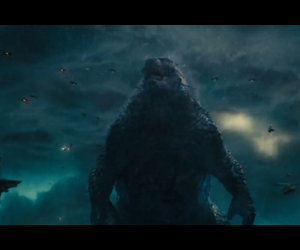 | | He's cruisin' for a bruisin' |
This is not to say it's a bad movie. If anything, it feels even more like a Toho-produced Godzilla film than 2014's Godzilla. However, fans of the previous movie might be put off by the switch in tone and style. It does some heavy course-correction from the perceived flaws of the 2014 film, announcing itself as being much more focused on the giant monster spectacle and kaiju craziness a vocal segment of the fanbase has been yearning for. Those fans are sure to be happy, as the giant monsters get far, far more screen time than ever before.
This is, in essence, Godzilla: Fan Service, and it is filled to the brim with references, callbacks, easter eggs, and teases that hardcore Godzilla fanatics will catch and appreciate. For instance, the first Monarch base that is visited is called "Castle Bravo," which anyone familiar with the backstory behind the original Gojira knows is the name of the atomic detonation that irradiated the "Lucky Dragon No. 5" and inspired Tomoyuki Tanaka to create Godzilla in the first place. That's just the tip of the iceberg, though, as this film touches on almost every single Godzilla film, and most of those references work pretty well. (As a fan, I'm not happy with how they use the Oxygen Destroyer, but that's a minor quibble.)
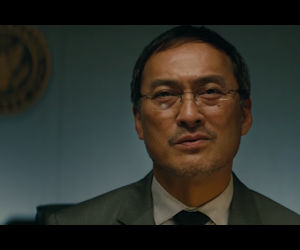 | | Serizawa is more interesting this time around |
However, this effort to please the fans has a few significant downsides. For one, it forces some retconning to what made the 2014 Godzilla work. Not only is the sense of gritty realism lost, but there are some distinct contradictions in the story. One of the neatest twists of Godzilla's origin story in the 2014 film involved how the nuclear testing in the Pacific was done in an attempt to kill Godzilla, but here, Dr. Serizawa explains that Godzilla was awakened by that same testing.
A bigger contradiction, though, is in Monarch itself. In 2017's Kong: Skull Island, the Monarch organization was a ragtag group of fringe scientists literally begging the government for funds just to hitch a ride to an island, and in 2014's Godzilla, they were a bit bigger, but still heavily reliant on the US military to get around and do anything. In Godzilla: King of the Monsters, Monarch is this enormous, international group with dozens of enormous underground bunkers, stupidly advanced future technology, a mobile airship base, seemingly inexhaustable resources, and much more. At first, they are defending themselves against being taken over by the US military, but then, in the very next scene, they are seen with a full contingent of US military personnel inside their super-secret Castle Bravo base with full knowledge of everything Monarch has at its disposal.
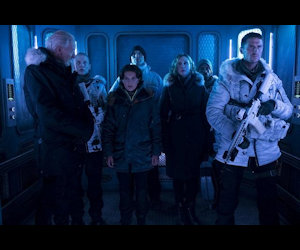 | | Charles Dance "elevates" things |
While Ken Watanabe's Dr. Serizawa is given more to do and has a few scenes where he is allowed to do more acting than he did in the previous film, his character is the exception, not the rule, with the vast majority of the human characters being so poorly established and lacking in depth that they are almost never relatable. The leads--Vera Farmiga, Milli Bobby Brown, and Kyle Chandler--do as good a job as they can with fairly bland characters with preposterous arcs, but the writing is very wonky, with their emotional climax near the end of the film offering nowhere near as much emotional weight as the film tries to give it. (There are other reasons for this being problematic, but I can't discuss them without dropping some massive spoilers.) The actor who comes out of this the best, though, is Charles Dance, the leader of the eco-terrorists. He is a terribly written, zero-dimensional villain, but Dance is able to elevate things with his usual slick style, making every appearance of his character a legitimate joy to behold.
But this movie is clearly not about the human characters: it's about the titans. On this front, it delivers on its promise, with multiple scenes of incredible monster-on-monster action. King Ghidorah serves as the primary antagonist, as he should, but he is joined by a very cool Rodan and a handful of interesting--though ancillary--other monsters who all fall under his spell. I was genuinely surprised by how well they handle Ghidorah, too, making it clear that he stands outside of the natural balance by sticking surprisingly true to his classic origins. On the other side of the monster battle lines, you've got Godzilla and Mothra. Mothra doesn't get nearly enough screen time, but she is great when she enters the fray. Godzilla is, of course, the King of the Monsters, and he earns that title in multiple knock-down drag-out brawls that never get old.
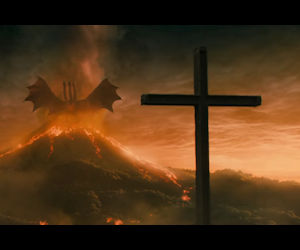 | | Monster Zero is a proper threat |
If I have any complaints about the monster action, it's that all too often, one of the main characters will be in danger, with one of the bad monsters (usually Ghidorah) about to kill them, only to be saved at the last possible moment by Godzilla's atomic breath coming in from off-screen. This happens at least three times, and that's at least two times too many. But the fights are visually stunning, with next-level visual effects and creature designs that will be hard to beat when Godzilla and Kong come to blows in the next film. They are also accompanied by a fantastic musical score that plays liberally with Ifukube's Godzilla theme and Yuji Koseki's Mothra song.
Honestly, if all you come for is the monster fighting, this movie will make you very, very happy, especially if you are well-versed enough to get most of the references to Godzilla's history. But if you come for anything else, you're sure to be disappointed. It's worth noting that Michael Dougherty, as a director, is not as talented as Gareth Edwards. Dougherty just isn't able to deliver the same sense of physical scale or emotional drama, though he is clearly trying as hard as he can. I might be in the minority as a superfan of 2014's Godzilla in saying that that film is superior to this relatively hammy sequel, but that's not to say I didn't enjoy myself thoroughly. Godzilla: King of the Monsters has taken a pretty big leap into silliness for the MonsterVerse (even moreso than Kong: Skull Island, itself a silly movie), but it's still true to its Japanese namesake and still enormously entertaining. I recommend seeing it in IMAX if you can, because as spectacle, this is definitely one of the year's best.
FINAL SCORE:





The monster action and evident love of the franchise makes this movie a joy for fans, but the human characters, writing, and directing leave a lot to be desired.
|
-e. magill 6/1/2019
| MORE LIKE THIS: |
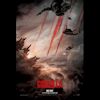
|
Movie Review: Godzilla (2014)
After the long build-up here at emagill.com, it's safe to say my expectations for Godzilla's latest entry were high, and yet they were still exceeded. [6/3/2014]
|

|
The Godzilla Reviews
The Geek kicks off Godzilla month by reviewing all 28 Toho Godzilla movies (along with that American imposter from '98). [4/22/2014]
|
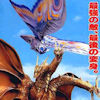
|
The Mothra Reviews
The Geek reviews the original Mothra and the 90's Rebirth of Mothra trilogy, along with 1956's Rodan. [5/30/2019]
|
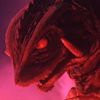
|
The Gamera Trilogy Review
During Japan's Heisei era, a trio of Gamera films were released that should silence all of the giant turtle's detractors. [8/23/2018]
|

|
Movie Review: Shin Godzilla
Japan's latest Godzilla film is about as subtle as an earthquake, a tsunami, and a nuclear meltdown, but it is remarkably effective. [8/24/2017]
|
|
|
|
|